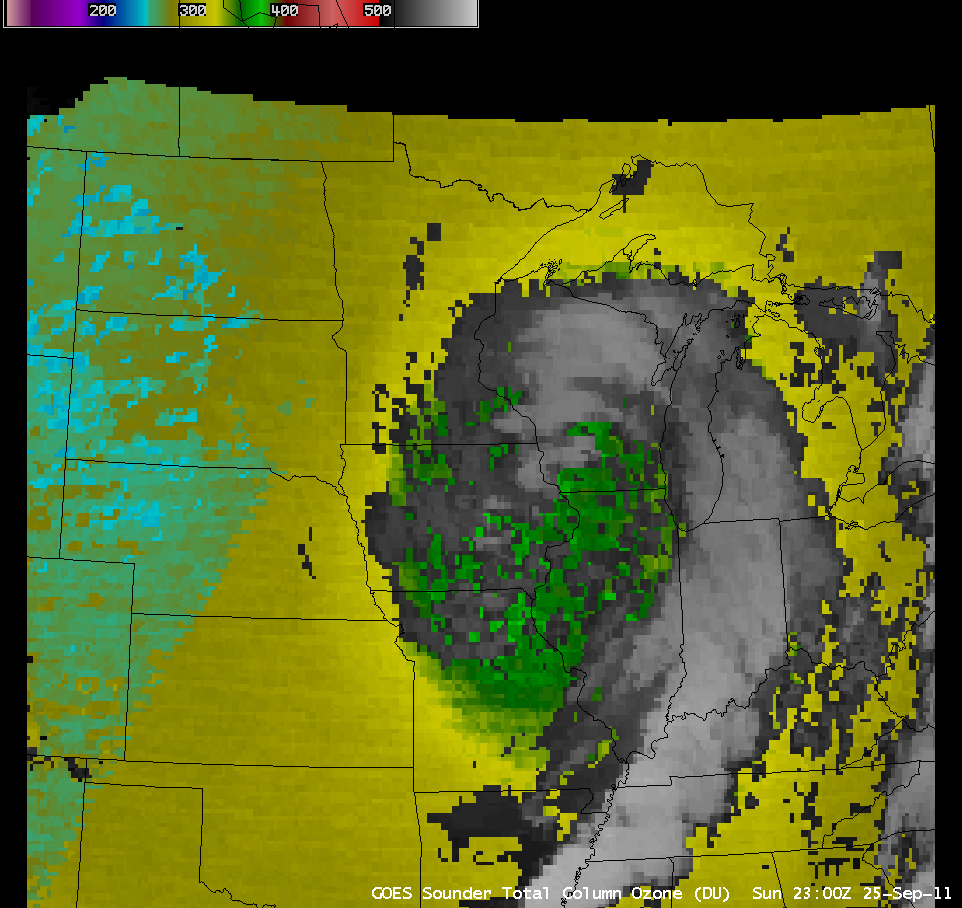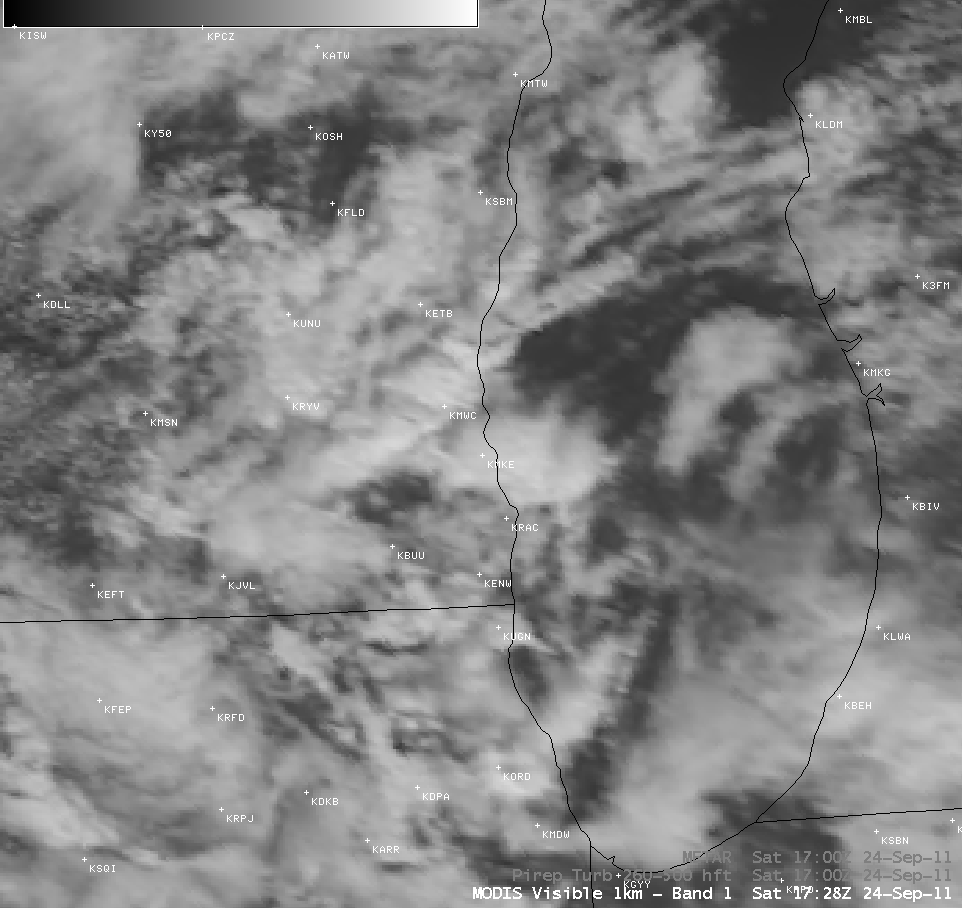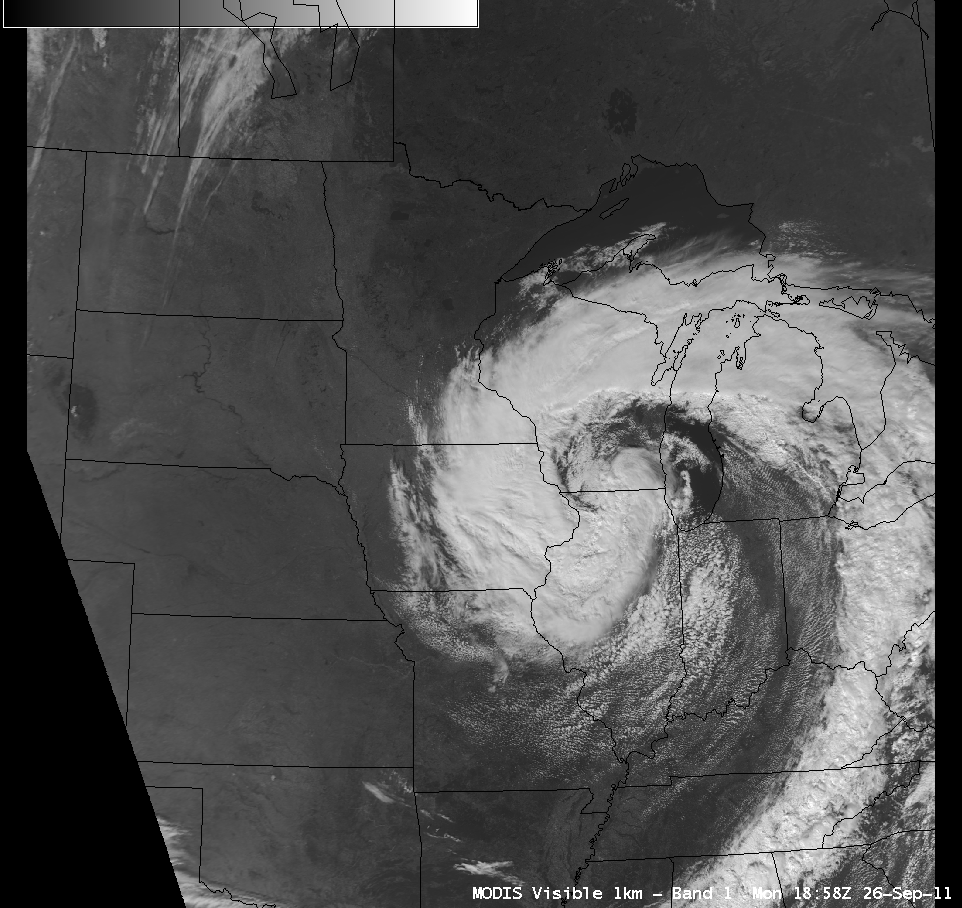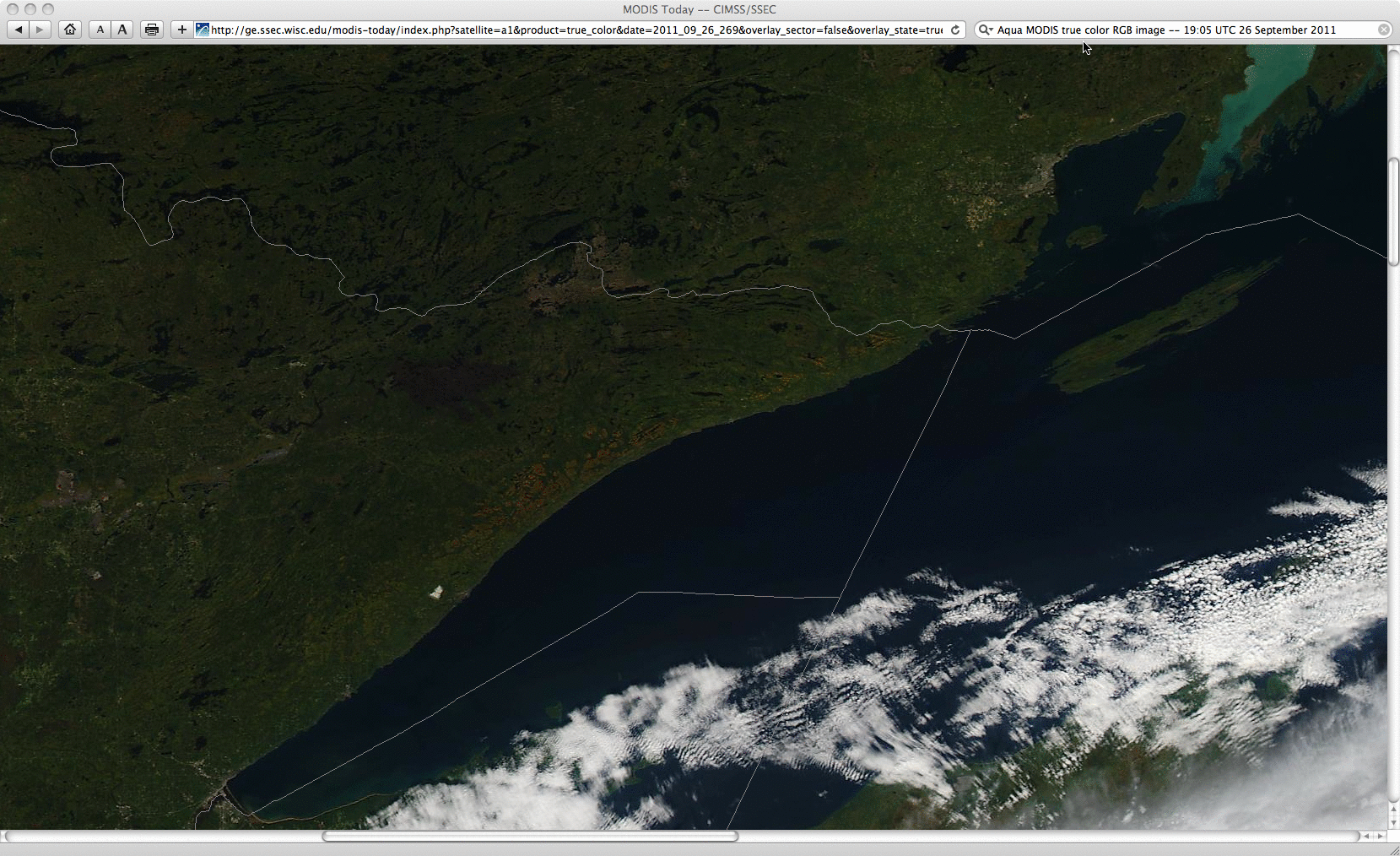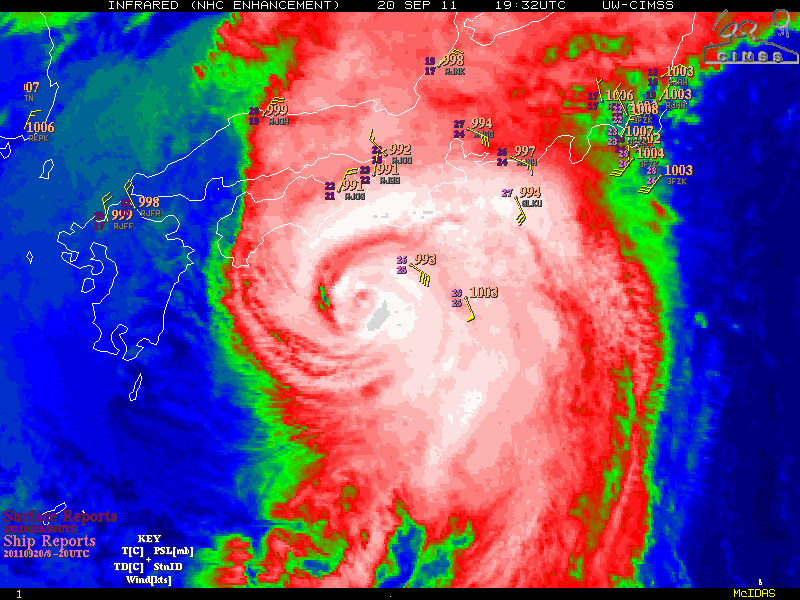McIDAS images of GOES-15 6.5 µm water vapor channel data (above; click image to play animation) showed the changing signature of a persistent upper level cut-off low lingering over the north-central US during the 23 September – 27 September 2011 period. As the system lingered over the region, it produced widespread wind gusts in the 30-40 mph range (with a peak wind gust of 46 mph at Green Bay, Wisconsin), and rainfall totals of 4-5 inches at some locations in northern Illinois.
AWIPS images of the hourly GOES sounder Total Column Ozone product on 25 September – 26 September (below; click image to play animation) revealed a distinct elevated ozone signature (300-400 Dobson Units, green to red color enhancement), which indicated that the height of the tropopause was lower in the vicinity of the cut-off low.
One notable impact associated with this cut-off low included thunderstorms along the Lake Michigan shoreline that produced a number of waterspouts that were seen from Milwaukee to Chicago. A comparison of MODIS 0.65 µm visible channel and 11.0 µm IR window channel image at 17:28 UTC (12:28 pm local time) on 24 September (below) showed one of the storms that exhibited cloud top IR brightness temperatures colder than -40ºC (blue color enhancement), along with a number of cloud to ground lightning strikes as it moved inland.
Another impact of this cut-off low included a number of pilot reports of light to moderate turbulence over the central and southern Great Plains region. A well-defined bloom of cirrus clouds developed within a zone of high 400-200 hPa layer wind shear, as seen on 4-km resolution GOES-13 6.5 µm water vapor channel images with overlays of CRAS model fields (below; click image to play animation).
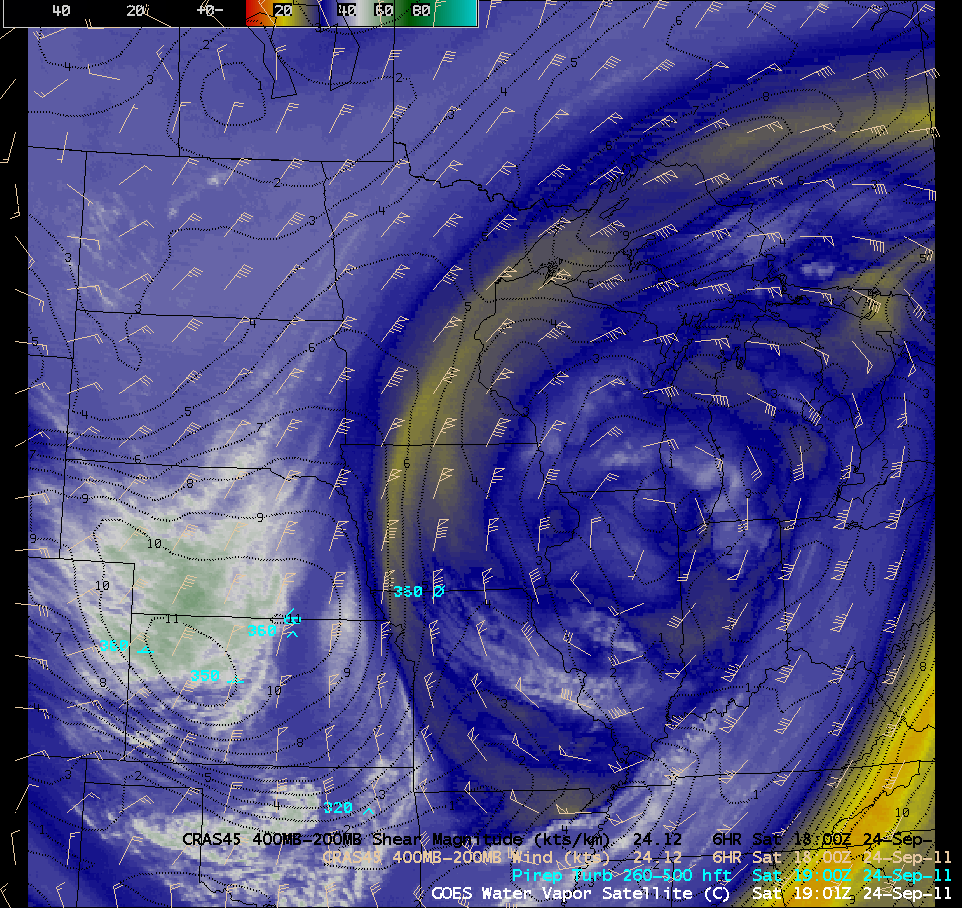
GOES-13 6.5 µm water vapor images + turbulence reports + CRAS layer winds and shear (click image to play animation)
Better detail of the banded structure of the cirrus cloud features within the high-shear deformation zone can be seen on a 1-km resolution MODIS 6.7 µm water vapor image (below). Note the pilot report of light to moderate turbulence during the entire flight from Denver (DEN) to Kansas City (MCI).
A sequence of 1-km resolution MODIS 6.7 µm water vapor channel images on 26 September (below) showed some very intricate dry air and moisture structures within the cut-off low during that particular day.
In a comparison of MODIS 0.65 µm visible channel and MODIS 6.7 µm water vapor channel images (below), note how much more structure is seen in the water vapor image — even in areas that are cloud-free in the visible image. This allows a number of water vapor features and gradients to be tracked using 3 consecutive GOES water vapor images, to produce MADIS high-altitude atmospheric motion vectors (AMVs) that can provide important wind direction and wind speed data. An AMV with a wind speed of 130 knots (at 300 hPa) was seen in the dry slot over southern Missouri.
View only this post Read Less


